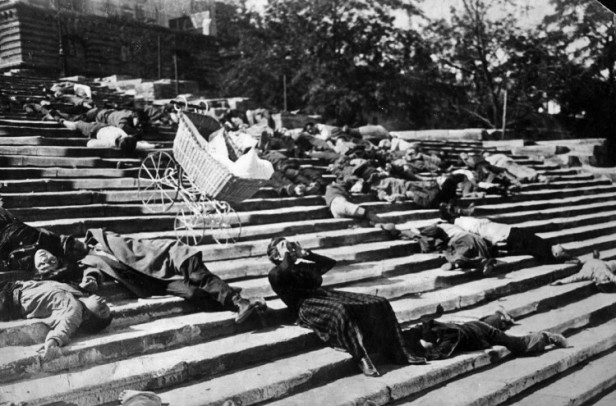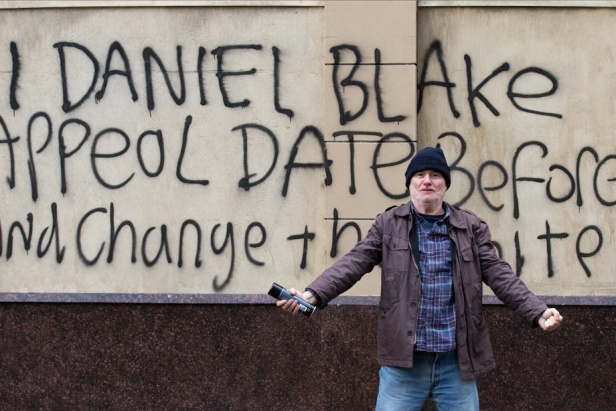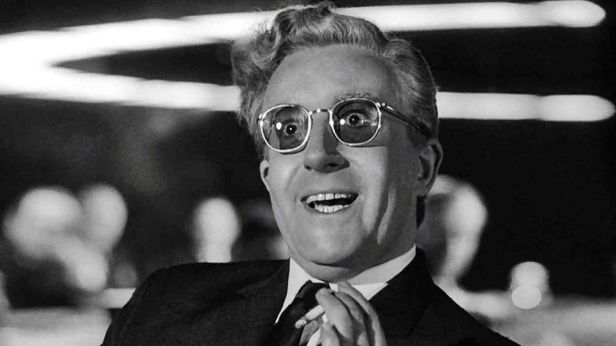Although many movies tend to have somewhat of a political message, these are those film’s which were overtly opinionated. So, with the world in a political whirlwind, let’s take a look at some fantastic political movies and celebrate France’s overwhelmingly firm rejection of the far-right:
La Haine (1995)

I have somewhat covered the political aspect and significance of this film in my ‘My top 5 modern monochrome movies‘ list. However, this is such a crucial movie in properly depicting an honest view of Paris, and it would be wrong to leave it out of this list. La Haine is a masterpiece which displays a side to life that the elite doesn’t want people to see. The city Paris is synonymous with words like ‘glamorous’ and ‘rich’, and whilst this is to some degree true, it is also just as honest to associate words like ‘poverty’ and ‘squalor’ with the French capital.
La Haine sets out to shatter the illusion of a peaceful, idyllic France, brought about by its depiction as an ethereal and whimsical setting in such classics as Breathless and Amélie. Interestingly, director Mathieu Kassovitz starred in Amélie after this film. Yes, this could potentially contradict the aim of La Haine, but considering the widespread popularity of this film, Kassovitz has done his part in highlighting societal issues. The film follows a group of youths living in the poorer areas of Paris. Despite their efforts, they are forced into a life of joblessness, poverty and crime due to the lack of opportunities given to them. It is counter-culture, showing a fight against those who oppress them with their prejudices. The police are symbolic of authority, and the youths set out to get revenge. Hubert, one of the group, is an aspirational young black boy, discriminated against both for his colour and class. He’s forced into crime. The bleak, monochrome visuals help to emphasise this hopelessness, and this battle for expression in a world where those trampled on by society are unable to have their voices heard.
This isn’t just a film for Paris, it’s a film for the world. It’s a reminder that life isn’t a dream, and that we aren’t all born even. Though we all deserve to be treated with respect this is by no means the case. This film is rather like City of God in that it portrays a sidelined side of a countries culture. This is important, as this film could be set in London, Berlin, Madrid, or almost any city, and the message would be as critical. The disparity between the rich and poor has never been so evident. We need, more than ever, to combat the 1%, and this film is the type of cinema which could incite such a revolution of social justice. La Haine challenges society, and more filmmakers should take up Kassovitz’ mantle.
Persepolis (2007)

When I thought of political film’s, Iran instantly came to mind. With so many fantastic movies emerging from this country it was near impossible to pick between them. However, Persepolis just beat off the competition. This French-Iranian co-production is beautifully animated, humorous, melancholic, and uplifting all at once. It’s a daring film which pulls no punches, made more surprising by the harsh Iranian censorship and punishment bestowed upon those critical of the government. This is seemingly the reason it was not a solely Iranian production. It’s a tale about finding your identity in a world which wants to strip you of it and provides the message that we should never give up hope as long as we can fight.
The film is based on the early life of Marjane Satrapi, the creator of the Persepolis graphic novel. We see her firstly forced out of her country after the right-wing theocracy takes control and oppresses females. Women are made to dress without any individuality, covering their entire bodies, and are expected to serve as submissive tools for males. Self-expression is taken away, causing trouble for Marjane, a young, rebellious, expressive youth, full of character. Iranian society did not allow for her to be herself. However, after living out of the country, she misses it despite its flaws. Whilst she recognises that her country is a politically backwards place, it’s her country, and the only place she can truly feel comfortable. She should not have to compromise on her happiness because of the poor political state of her nation. She looks for the middle-ground between submission to societal expectations and finding her own voice. In Schindler’s List-like style, Marjane is the one character who is ever animated with any colour. She is a unique individual in a country where individuality is seemingly frowned upon, as shown by the uniform black and white visuals. However, she aims to help others also express themselves as she does.
Marjane Satrapi critiques the Iranian government and society but does not abandon hope. As long as other young girls can be enthusiastic and strive for individuality then there is always something to endeavour for. We see a bloody war at the start, and whilst Marjane does not herself take part in physical combat, she has a battle with herself. This battle is one for self-expression, as she strives to be herself, but also one for the hope of her nation’s politics and for the youth of tomorrow. She will not cowardly abandon the battle to save her country from right-wing patriarchal leadership. She wants to serve as an inspiration for young girls and to inspire them to fight those who would oppress them.
Battleship Potemkin (1925)

It would be a crime not to include the father of modern film on this list. Whilst not technically the first, Battleship Potemkin is the most iconic Soviet montage film. Sergei Eisenstein pushed the boundaries at the time, using a series of images which would create the illusion of a spatial construction. Before this filmic movement, static shots would comprise a scene, as opposed to various shots edited together. It would be fair to say that, whilst a classic, this film is less lauded for the content itself, but more for its historical significance.
1925 was a time of strict communism in the Soviet Union, and this film functions as propaganda. It shows those with power oppressing and brutalising the proletariat. Though set far after the revolution against these oppressors, it is a reminder of who the enemy is. We see the malnourished, mistreated workers storm and seize control of a ship ran by the strong. They reach shore and are brutally murdered for their rebellion. Although slightly ironic that this was made during the Stalinist period, it serves as a poignant reminder that we must fight those who seek to dehumanise us and strip us of our rights. This is an impressive film. It’s boldly shot, with some really striking visuals, most notably the shot of a mother and her baby being gunned down, and is a technical masterpiece, functioning as an efficient and effective piece of propaganda. The use of montage created a sense of action, enhancing the movies emotionality and power, and therefore aiding its purpose of manipulating its audience.
In my opinion, this film is, when judged by modern day criteria, the worst of the films on this list. Whilst it is good, as it is only a primitive form of a now perfected art, it is rather clunky. However, it is by far the most important film I’ve spoken of. Although I imagine the concept of montage would eventually have been conceived anyway, Eisenstein revolutionised cinema and ushered in a new era. No film has managed to escape the gravitational pull of this filmic revelation. Even a movie like La Jetée, comprised entirely of still images, exists as a piece of non-conformist cinema playing off of this established tradition. Though many better filmmakers have taken the directorial helm, Eisenstein can rightfully stand alongside the greats of film.
I, Daniel Blake (2016)

Legendary filmmaker Ken Loach created a scathing view of the Conservative government’s treatment of the lower classes in I, Daniel Blake. Although I don’t want to make this list about my own personal politics, with wages dropping, public services being systematically dismantled, the national debt rising, and even nurses resorting to food banks, the Conservative government have been a disaster for those not in the 1%. This film is vital, as when a government has a monopoly on the media it’s hard to push through the truth. Winning the Palme d’Or at Cannes, Ken Loach, a veteran social realist director, is still fighting injustice with the same gusto he showed in the early days of his career.
The story follows the eponymous Daniel Blake, played by Dave Johns, a debut actor. His everyman appearance is perfect. He seems like a down to earth, charismatic, honest, hardworking man. He perfectly fits Loach’s realist style. Blake, after a heart attack, is forced to work, with his benefits cancelled, despite being declared too ill to do so. He tries to fight the system but is crushed. Despite being a decent man he is treated like an ant. Just one of a stream of people consigned to slave away. The reality is heartbreaking. The visits to food banks and lacking money to pay for food or bills are real struggles. Loach, whilst directly attacking the Tories with his ‘Fuck the Tories!’ line and defamation of the job centre, a symbol of authority, also attacks common stigmas. In Britain, other than immigrants, the most demonised, scapegoated members of society are single mothers and those on benefits. These stigmas tend to arise when the disenfranchised are lied to by the government, who are the real issue, and yet need to have someone to blame for their issues. Loach, by humanising these members of society and showing the hard, yet honest lives they lead makes it plain that it is, in fact, the Conservative’s destroying our lives.
Whilst arguably unsubtle in its rather blatant message, I, Daniel Blake is one of the most important and moving British films in decades. People need to realise that the Conservatives are the party of the few and not the many. If our society is to improve, both in Britain and elsewhere, we must reject those who represent the rich. Loach has no choice but to be direct with his critique of the government, as with so few genuinely speaking for the lower classes, it’s vital that the message of the film is made as plain as possible. The right wing does not and never has represented the oppressed. Loach believes in a better future for all. Things need to change, and Loach is doing his part to bring this about.
Dr. Strangelove (1964)

Dr. Strangelove is arguably the best piece of satire ever made. It is a Kubrick film after all, so its quality shouldn’t be a surprise. This reversal of the events of the Cold War perfectly exemplifies the stupidity and rashness of those in charge, highlighting how brittle the barrier between total destruction and survival is. It has aged remarkably well. With a potential nuclear war still a constant worry and possibility, with North Korea currently threatening such a thing (although Kim Jong-un is an insecure loser and full of crap), this film is as relevant, sharp, hilarious and frightening as it was upon its release over 50 years ago.
The film follows a chain of events leading to the launch of a nuclear weapon by the US upon Russia. A mad American general disobeys orders, seeing nuclear conflict as a means to end the war. Russia, also, moronically, forgot to announce they had created a weapon which, if hit by a nuclear bomb would wipe out humanity. The point of a deterrent is people knowing of its existence. Kubrick makes such a strong anti-war message. He highlights how Trump like figures could abuse power to start a war, how a lack of foresight could cost us dearly, and how total the destruction would be. He recognises the petty nature of war, making comedy from this. He uses bold, near caricatured characters to create humour, but also to emphasise the lunacy of those who would actively seek combat. Despite being a hilarious mockery of military figures and the pettiness of war, it’s also terrifying to see how easily we could plummet into a nuclear conflict. Despite how ridiculous the characters are, the message is very real.
War is never ending. Peace never seems to come. Whether it’s an invasion for financial gain, religious conflict, or civil war, there’s always bloodshed. Is it ever truly necessary? It seems that the majority of conflict is instigated by insecure old men, who want to feed their hubris’. Look at Trump, Jong-un, and Putin. These hideous creatures are the people Kubrick was referring to. The need to constantly remind us of their masculinity, to be the best, the biggest, and the strongest is what Kubrick criticised. His message will hold true as long as we have leaders who need their egos massaged every 5 seconds. War is a tool for these insecure and immature arses to forget about their tiny dicks (or in Trump’s case, hands). Kubrick is stating that, whilst it might be funny to laugh at these idiots, one day they’ll be the ones who kill us all. It’s a chilling message.


